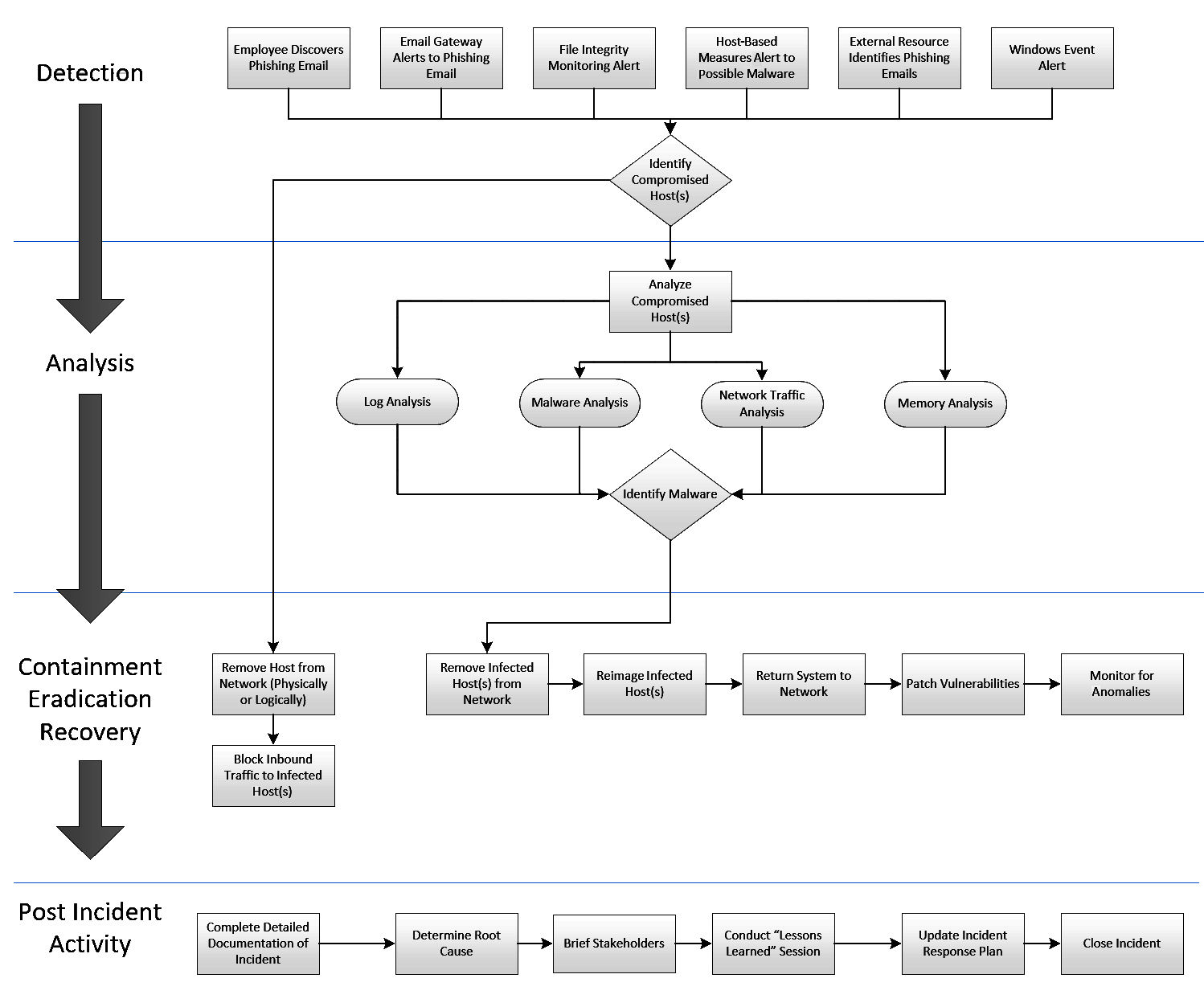One key aspect of the incident response plan is the use of playbooks. An incident response playbook is a set of instructions and actions to be performed at every step in the incident response process. The playbooks are created to give organizations a clear path through the process, but with a degree of flexibility in the event that the incident under investigation does not fit neatly into the box.
A good indicator of which playbooks are critical is the organization's risk assessment. Examining the risk assessment for any threat rated critical or high will indicate which scenarios need to be addressed via an incident response playbook. Most organizations would identify a number of threats, such as a network intrusion via a zero-day exploit, ransomware, or phishing as critical, requiring preventive and detective controls. As the risk assessment has identified those as critical risks, it is best to start the playbooks with those threats.
For example, let's examine the breakdown of a playbook for a common threat, social engineering. For this playbook, we are going to divide it out into the incident response process that was previously discussed.
- Preparation: In this section, the organization will highlight the preparation that is undertaken. In the case of phishing, this can include employee awareness to identify potential phishing email or the use of an email appliance that scans attachments for malware.
- Detection: For phishing attacks, organizations are often alerted by aware employees or through email security controls. Organizations should also plan on receiving alerts via malware prevention or Host Intrusion Prevention System (HIPS) controls.
- Analysis: If an event is detected, analyzing any evidence available will be critical to classifying and appropriately responding to an incident. In this case, analysis may include examining the compromised host's memory, examining event logs for suspicious entries, and reviewing any network traffic going to and from the host.
- Containment: If a host has been identified as compromised, it should be isolated from the network.
- Eradication: In the event that malware has been identified, it should be removed. If not, the playbook should have an alternative such as reimaging with a known good image.
- Recovery: The recovery stage includes scanning the host for potential vulnerabilities and monitoring the system for any anomalous traffic.
- Post-incident activity: The playbook should also give guidance on what actions should take place after an incident. Many of these actions will be the same across the catalog of playbooks, but are important to include, ensuring that they are completed in full.
The following diagram is a sample playbook for a phishing attack. Note that each phase of the incident response cycle is addressed as well as specific actions that should be taken as part of the response. Additionally, organizations can break specific actions down, such as through log analysis for a certain playbook, for greater detail:

Playbooks are designed to give the CSIRT and any other personnel a set of instructions to follow in an incident. This allows less time to be wasted if a course of action is planned out. Playbooks serve as a guide and they should be updated regularly, especially if they are used in an incident and any key pieces or steps are identified. It should be noted that playbooks are not written in stone and are not a checklist. CSIRT personnel are not bound to the playbook in terms of actions and should be free to undertake additional actions if the incident requires it.


























































